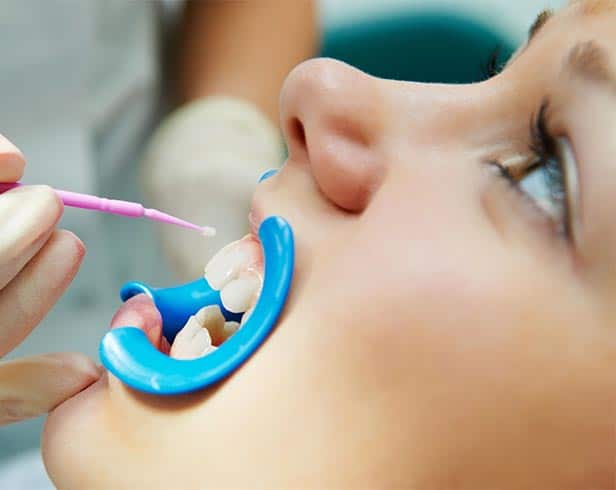THE CARE BEHIND A HEALTHY SMILE
Dental Sealants
- Sonya Wright-Kling
5.0

The chewing surfaces of the back teeth can have tiny grooves, known as fissures. Tooth decay can easily start in fissures where food can get stuck and where it is hard to clean. The grooves are so small that toothbrush bristles can’t get into them to clean away food and bacteria.
Sealants are thin plastic coatings that cover the grooves on the chewing surface of back teeth. They help to prevent tooth decay by creating a smooth, easier to clean surface. Sealants were developed in the 1960s and have been widely used since then.
When sealants may be used
Most decay starts in the narrow pits and grooves on the biting surfaces of the back teeth (molars). The permanent molars have the highest risk of tooth decay and benefit the most from dental sealants.
For most children, the first permanent molars come through at about six or seven years of age and the second molars about age 11 or 12 years. As the molars come through, they are at greater risk of tooth decay as they are further back in the mouth and may not be cleaned as well as the front teeth. At these times, it is particularly important to keep up with your child’s regular dental check-ups.


Benefits of dental sealants
Sealants are used to fill up the small grooves or fissures in your back teeth, keeping food and bacteria out and preventing decay.
There are several benefits to using sealants. They:
- are white or clear
- fill and block up the small pits and grooves in the teeth to prevent decay
- take a few minutes to apply
- do not cause pain
- do not require you to have any injections or drilling
- do not dissolve in saliva
- are safe.
How are dental sealants applied?
It takes only a few minutes for your dentist to apply dental sealants to the biting surfaces of all of your teeth. The team at Albemarle Dental Associates cleans and thoroughly dries your teeth first, then applies an acidic gel to your teeth to make the surfaces a bit rough. The roughness helps the sealants stick.
The team rinses the acidic formula off of your teeth, then paints on the liquid sealants. They then use a powerful blue light to harden the sealant material in place. The team can also paint sealants over teeth with minor or early signs of decay, which can stop the decay from worsening into a cavity.

Glad I made the choice to go Melissa dental 🤠
